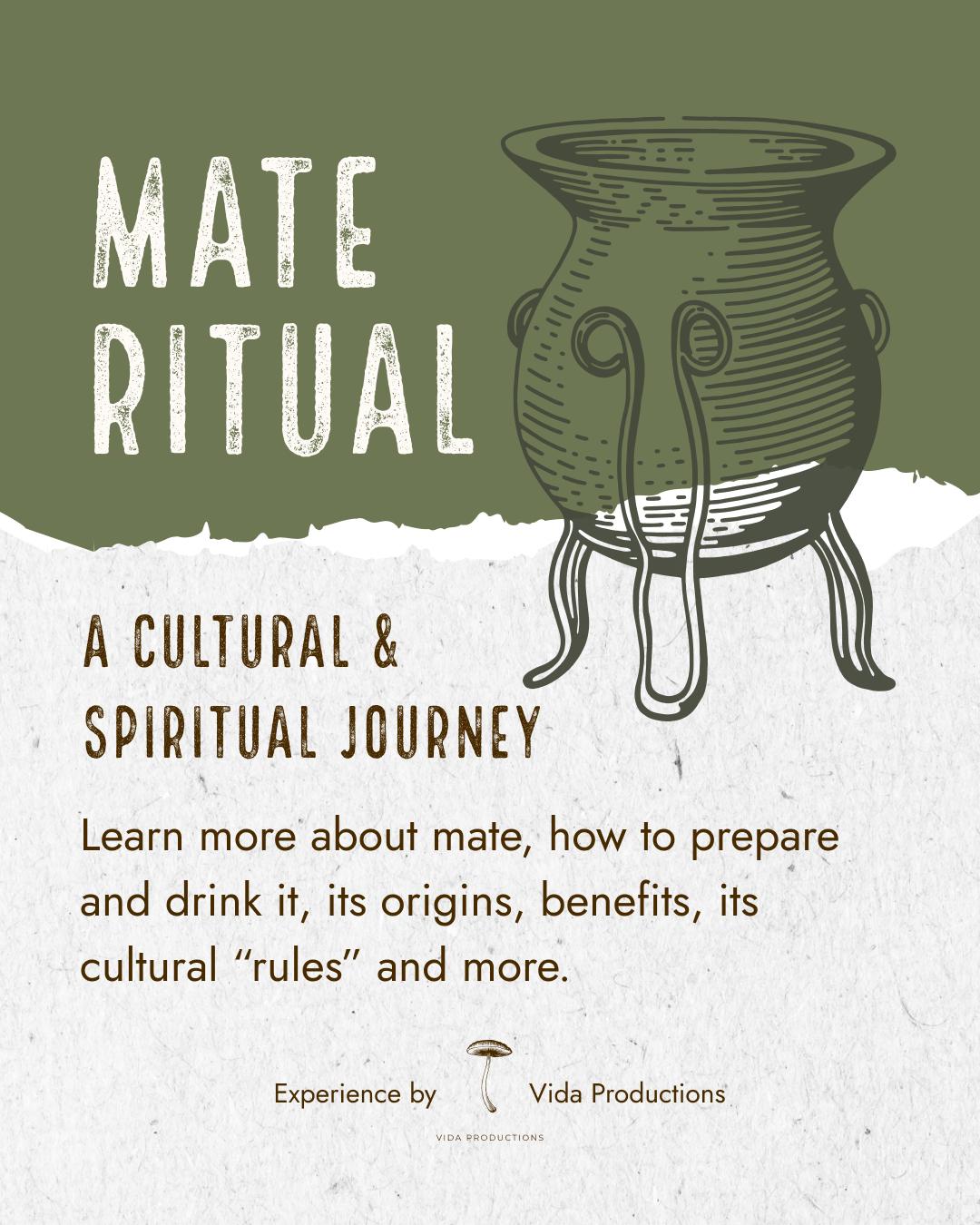
MATE RITUAL: A Cultural and Spiritual Journey
Introduction:
In Argentina, the ritual of drinking mate is much more than just enjoying a beverage; it is a daily practice that symbolizes friendship, connection, and tradition. We propose bringing this experience to your festival or retreat through a cultural ceremony that invites participants to explore the history, meaning, and preparation process of mate.
Ritual Summary:
“Mate: A Cultural and Spiritual Journey” is an interactive ritual that delves into the origins of mate, its cultural significance in Argentina, and the ceremony of its preparation and consumption. This ritual lasts approximately 1 hour and includes a live demonstration, a moment of reflection, and active participation from attendees.
Brief History of Mate’s Origins:
Mate has its roots in the culture of the Guarani indigenous people, who lived in the regions of present-day Paraguay, Argentina, Brazil, and Uruguay. The Guarani considered yerba mate a gift from the gods due to its energizing and medicinal properties. They consumed the leaves of the yerba mate plant in the form of an infusion and also used it as a form of currency.
With the arrival of Spanish colonizers in the 16th century, Europeans quickly adopted mate consumption after observing its revitalizing effects. Jesuit missionaries played a key role in spreading the beverage, encouraging its cultivation and consumption within the missions. Over time, mate became a deeply rooted tradition in the daily lives of South American peoples, particularly in Argentine culture, where it symbolizes community, friendship, and a daily ritual.
Health Benefits of Mate:
Mate is renowned for its numerous health benefits, including:
1. Natural Energizer: Contains caffeine, theobromine, and other alkaloids that provide an energy boost, improving alertness and focus, similar to coffee but without causing excessive nervousness.
2. Antioxidants: Yerba mate is rich in polyphenols, antioxidant compounds that fight free radicals, helping reduce oxidative stress and strengthen the immune system.
3. Digestive Aid: Promotes digestion and can act as a mild laxative. Traditionally used to relieve digestive issues such as indigestion and constipation.
4. Weight Management: Its thermogenic effect helps speed up metabolism and increase fat burning, contributing to weight control.
5. Mood Enhancer: Theobromine, also found in cacao, can improve mood, offering a sense of well-being and relaxation.
6. Source of Vitamins and Minerals: Provides B vitamins, essential for energy metabolism, and minerals like potassium and magnesium, critical for proper bodily function.
7. Anti-inflammatory Properties: The antioxidants and saponins in yerba mate have anti-inflammatory properties, which can help reduce inflammation and the risk of chronic diseases.
In summary, mate is not just a beverage with a rich history and cultural tradition, but also a source of numerous health benefits, making it an essential part of daily life for many in South America.
Ritual Details:
1. Introduction (5 minutes)
o Welcome the participants.
o Brief overview of mate and its symbolism.
2. History of Mate (10 minutes)
o Origins of mate in Guarani culture.
o Evolution of the ritual throughout Argentine and South American history.
3. Cultural Significance (10 minutes)
o Explanation of the mate ritual as a social and spiritual practice.
o The value of the “mate circle” and its lessons on community and respect.
4. Ritual Demonstration (15 minutes)
o Live preparation of mate, showcasing traditional elements: yerba, the mate cup, the bombilla (straw), and water.
o Invitation for participants to taste mate.
5. Reflection and Participation (15 minutes)
o Space for reflecting on how practices like mate can be integrated into daily life.
o Q&A session to deepen the experience.
6. Closing (5 minutes)
o Thank you and farewell, encouraging participants to carry the spirit of mate with them.


